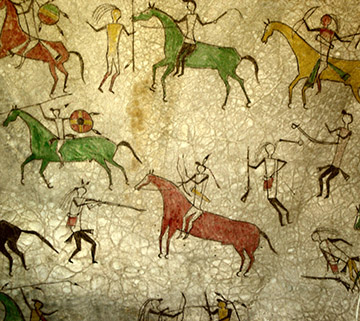Natural world & Native American Death Rituals
US – Native American traditions and rituals may differ from tribe to tribe, but commonalities exist in Native American death rituals. Modern day Native Americans may incorporate ancient death rituals, handed down from their ancestors, in a modern funeral service.
Every culture, country, religion, and community has certain behaviors and rituals that govern their actions when a loved one dies. These traditions and death rituals are based upon:
- Religious and spiritual beliefs
- Belief on whether there is life after death
- What type of life there is after death
- What happens to the body and soul after death
- Superstitious beliefs about death
- The social status of the person who has died
- Beliefs towards the meaning of life
- Any connections between those living and those that have died
- Beliefs about the human connection with animals and nature
Burial customs and death rituals among the Native American tribes in the past varied widely because they all have different religious and spiritual beliefs. Following is a small list of the 562 federally recognized Native American Indian Tribes.
- Apache
- Arapaho
- Blackfoot
- Cherokee
- Cheyenne
- Comanche
- Crow
- Navajo
- Nez Perce
- Pawnee
- Shawnee
- Shoshone
- Sioux
The one belief that is common among Native American tribes that influences death rituals is the focus on helping the deceased be comfortable in the afterlife or protecting them in the afterlife. Death rituals include placing food, weapons, jewelry, tools, or pots within the burial site for the use of the deceased in his afterlife. The Nez Perce Native American tribe would even sacrifice the deceased’s horse, wives, or his slaves so they could be buried together. Other common Native American death rituals include:
- The medicine man or spiritual leader leds the ritual
- Deceased ancestors are asked to join in the rituals
- The belief that the spirit of the person never dies
- Gifts are buried with the deceased
- Pipes are smoked
- The circle is symbolic in the ritual, as in the circle of life
- Nature is revered; death is part of nature
- The burial is often done at a special site either close to or away from their home
- Death is believed to be a journey to another world.
- Some Native American tribes felt the deceased person was resentful of those that were still living and were fearful that the ghost of the dead would come back and cause trouble for anyone who used their possessions. This belief led them to burn the deceased’s house and all of their possessions. The family would move to a new house in a new location to escape the ghost of the deceased. Native Americans believed they should not impede the spirit of the deceased from finding its way into the afterlife. They also believed they should help guide or aid the spirits ascent. Death rituals that were common for this purpose are:
- Not burying the body
- Elevating the body in a tree or on a platform
- Leaving an opening in the burial place or coffin
- Burying a horse with the body so it can carry the body into the after life
- Not saying the deceased’s name out loud for fear of calling them back to earth
Curated from Native American Death Rituals


Leave a Comment
You must be logged in to post a comment.